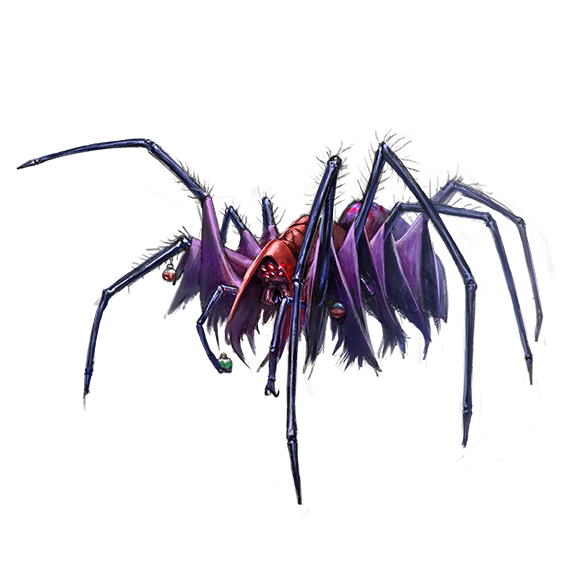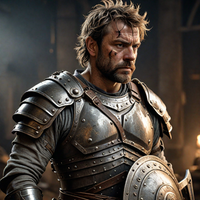Pathfinder is D&Ds brother that studied business and economy instead of theater
A valid build in Pathfinder 1.0 was a quad pistol halfling paladin with a velociraptor mount.
OSR: oh you guys are having uh, ill see myself out
deleted by creator
I’ll play with you.
Seriously.
I haven’t before but I’d love to. Last dnd I played was 3.5. I won’t touch anything else, except pathfinder and other non-dnd games.
I’m looking to DM kingmaker on pf2e! Let me know if you’re interested.
deleted by creator
What are some highlights that make you feel that way? I’ve never played.
Here’s my list:
- It scales very well from level 1-20. The math just works at all levels of play.
- 3 action rounds
- Encounter design and balancing is easy for the busy GM
- All of the classes are good, flavorful, and have interesting options
- Teamwork is highly encouraged through class and ability design
- Martial/Caster/Support balance
- Degrees of success/failure
- Easy, free access to the rules
- The ORC license
- https://pathbuilder2e.com/
- Pathfinder Society Organized play is well done and well supported by Paizo
- The rune system for magic weapons/armor
You forgot counteracting. So effin elegant!
Also the sheer amount of stuff they print. They are continuously putting out high quality adventures with a storyline that makes sense and doesn’t have giant blank spots that you’re expected to fill in for a few levels. They’re switching to a quarterly hardcover model instead of a monthly adventure next year. The rulebooks are nice and paizo isn’t shy about making new ancestries, classes, and options for existing ones, and they balance the more odd or possibly unbalanced options by making them uncommon or rare such that they require GM approval to take. And a whole bunch of setting books that examine all corners of their world, from over views of whole continents to deep dives into specific cities.
Great list. Totally agreed across the board, and I’d add that they just folded Starfinder into the PF2e engine, which means that it now has a ton more content for it (including some stuff that isn’t sci-fi exclusive).
I don’t know if I agree that all classes are good.
Oracle and Gunslinger have always (at least in my mind) seemed to be overly weak. Like, Gunslinger seems like if should be a high damage output class, but lack of Dex to Damage really seems to hinder him from being a hard hitter. Lol, not to mention, guns just feel really weak.
For Oracle, her curse seems a major downside without a compensating upside (at least until late levels; haven’t built one above lv 5).
I’d love to hear counterpoints of anyone has any.
To be clear, 95% agree with your takes though.
but lack of Dex to Damage really seems to hinder him from being a hard hitter.
This is offset by nearly every firearm having the lethal trait, where on a crit their damage dice increase in size and they get an addition damage die.
The class is built around crit-fishing, and it works well. Granted, it gets hard to reliably crit higher-level enemies, but that’s easily offset by the party working together
Wait, your party works together??
Wish mine did that.
Very rarely
I just wish I could be a player in a PF2E game for once because I love playing support classes
I’m a gunslinger in one of the games I play in, and yeah, I don’t do barbarian numbers, but I hold my own, and it is a FUN class to play. I built a dual-wielder with the hopes that it would play like Han Solo running down the hallway shooting back at stormtroopers, and it delivers.
Plus, being 60 feet away means that I can help everyone do damage at once. It makes the party happy, too.
Hmmm, okay. So I have a personal affinity for Swashbucklers. Compared to a proper fighter, they don’t lay down much damage, but they can move, and then when you get where you need to be, you can lay down pain in other ways (love a good tumble through + trip).
I remember immediately seeing the value in all that when it was first released, even though my party said that it felt way to convoluted. I think I’m just in the other side of that kind of conversation here.
That’s awesome. I haven’t gotten my head around a swashbuckler myself, but the ones I’ve seen play definitely feel like they’re “of a kind” with gunslingers.
It’s worth noting, too, that the gunslinger “way” that you choose will define a lot of how the class plays. My pistolero’s quick, seemingly careless gunplay will feel very different from someone who builds a sniper and is much more methodical and sneaky.
Re: oracle
Being a divine spontaneous caster fucks; your entire spell list is Heal if you need it, and literally anything else if you don’t. And trading a spell/day and slightly smaller repertoire for some extra durability is generally worth it in my experience.
Also Divine Access means you can pretty much pick whatever spells you want, and more as more gods come out or you and your GM make some more.
I liked the focus spells more back when battle oracles weren’t hit with the nerf bat and could literally just be the juggernaut whenever they got cursed
I’ve always been allergic to spell casters (the strategy behind the best use of spell slots just never clicked for me - which is extra painful because it seems like if should be simple, but I consistently manage to botch it), going back to when i picked this all up in the 3.0e days.
I think that’s caused me to not really engage with the spell casting side of spell casters in PF2e. I remember in 3.5, we banned Mystics because spontaneous divine spell casting was broken, so maybe I just need to run one to see if work.
Two big things I love:
-
Three action system: every “activity” (strike, stride, cast a spell, etc) has an action cost. On a standard turn, your character gets 3 actions to spend on those various activities. This obviates the need for DnD’s rules about spending a whole turn running since you can just spend multiple actions striding.
-
Keyword system: PF2e leans more onto standardized keywords and uses them appropriately. Everything (all actions, weapons, items, even statuses) has a set of traits that (usually) briefly explains how the thing acts. It allows for standardized templates for interactions between different elements of the game. This takes a HUGE burden off the GM during game play, esp for modules that weren’t written to think about each other. All the examples I can think of would take several pages to explain, but you can look up some things on Easy Tools and see their traits.
Bonus thing I love: all the rules are openly published, leading to TONS of extra tools that just make the game easier to run. (That said you should buy a set of books to help the publishers after you’ve been converted).
-
I think one of the biggest things, besides not being owned by WOTC, is that it doesn’t have a million exceptions you have to remember.
D&D5e: Want to use your bonus action? Cool. Is it for a spell? Have you cast a spell this round? Is it a spell that’s allowed to be cast even if you’ve cast a spell?
Pathfinder2e: Do you have enough actions to perform an action? OK, do it.
That does seem nice. One of the many reasons I DM 5e from a “does it make sense” perspective over a rules as written perspective.
Not OP but the top 3 for me are
- Martial - Caster balance
- 3 action economy
- A much better framework for GMs
deleted by creator
That does seem like a big upside!
Is it still compatible with all the money I wasted on 3.x Hasbro D&D?
First edition Pathfinder should be. Second edition is more like 5e, but actually thought out. I don’t think it’s natively compatible with D&D5e though.
Oh, 1e Pathfinder is basically 3.75. I have the core book and a few others somewhere, and I lost the 3-ring binder with the thread from the GitP forum laying out the major changes between 3.5 and PF, as well as conversions for books that didn’t exist for PF, and some of the Green Ronin stuff.
Yeah. I don’t think 1e is underrated, but I do think it’s over-hated. It’s the system I largely got started with for TTRPGs. It’s really not that difficult, but it does let you make things very complex.
I know why people went for D&D 5e over Pathfinder, but I think it should have been seen as an entry point, not the place you stay forever like it’s become for most people. It’s dumbed down, but also with you having to remember a lot of exceptions and things because they dumbed it down too much and tried adding things that didn’t fit exactly into the rules.
No
Then it’s totally useless to my interests or needs.
deleted by creator
You’re probably right. But I prefer to play the games I’ve already got material and experience with. Though that may be because I tried Apocalypse World and Dungeon World after loving Dogs in the Vineyard, and dislike PbtA systems so much that I’ve gone out of my way to support K. N. Obaugh’s DOGS; and I’ve tried 5e. The only version I can tolerate of it is Black Hack. Shadowrun 6 sent me back to Anarchy, and there is no game that captures what GURPS 3 or Marvel FASERIP do.
deleted by creator
No, but it is much improved and streamlined
That’s the 4e & 5e sales pitch. No interest then.
2e did the 5e thing of filing down a table top game to a video game.
Doesn’t help that we’ve got metric tons of content in the old system. Why retrofit what didn’t really need fixing? Just give me more APs.
It’s only a TTRPG if you can win it in character creation. Everything else is just sparkling video game.
Eh? It absolutely did not do that thing.
So first of all, if you like D&D 3.x or Pathfinder 1e, I’m glad! It’s a fun system. I have many great memories of amazing campaigns in that system, and I think it’s most important that you play the game you like. But I’ve been hearing this “video game” thing for half a decade now, which means I’ve got a whole big rant prepared. I’m…I’m sorry.
Ok. So. Yes, 5e filed off all of the stuff that was interesting, the big numbers that make people feel powerful, the stuff that made characters unique, etc. in its pursuit of making D&D like a video game. But Pathfinder went the opposite direction.
-
You can make 238,140 mechanically distinct level two characters based on ancestry, class, and archetype alone (that’s not a random guess, I did the math); and while they won’t all have the same power level, they will all likely be able to contribute meaningfully. And that’s not even counting all the class-specific choices and options, or the other feats you could take. Paizo is six years into PF2e right now, and even though they had to waste a bunch of time dealing with WotC’s OGL nonsense, they’re up to nearly a quarter million different combinations; but 3.x didn’t get anywhere near that level of meaningful customization until Pathfinder debuted archetypes in the APG in 2010—a full decade after 3.0 came out.
-
The 3-action economy is so much easier to play and explain than “wait, what’s a ‘swift’ action again?” (I’ve taught a seven-year-old how to play successfully), but it doesn’t feel like a video game like 5e does because there are actual, meaningful choices you can make with each of your three actions. While 5e (and 3.x before it) often devolves into “conga line of death” (surround the bad guy for flanking, whomp him with your biggest weapon twice per turn, don’t move because he’ll AOO you into powder), you can do essentially whatever you want with each of your three actions and make a difference.
-
Plus, where 5e aimed at making things even more same-y with “bounded accuracy,” PF2e leaned into crits so hard that they had to lean into crit fails, too, in order to balance them. You can crit succeed and fail at skill checks, and the APs have rules for what happens when you do. Some weapons are built around crits, and they’re not a 1-in-20 chance anymore. You can do them quite often with the right build.
-
As far as setting, the Forgotten Realms were probably interesting back when Greenwood came up with them, but putting a billion authors into the world has made it into the same bland, boring, Wal-Mart-Brand-Middle-Earth that Greyhawk was; but Golarion has something like three different continents for every possible type of fantasy setting you might want (that is a random guess, and probably an exaggeration).
And with the addition of Starfinder to the system a few weeks ago, all of that gets doubled or more.
Plus, it’s so much easier to run as a GM than the 3.x games were. I remember the first time I put a “hard” encounter together for PF2e. I looked at it and was like, “whoa, that can’t be right, I’m gonna have a TPK!” So I nerfed the encounter, and the players stomped it in two rounds. When I built an encounter the next week using the rules as written, it was a fun and dynamic encounter that lasted the entire session. One character went down. Everyone used their consumables and resources. It worked perfectly. Ever since, I trust that the encounter math knows what it’s talking about. When was the last time you were able to say that in 3.x?
Doesn’t help that we’ve got metric tons of content in the old system.
A lot of the really good stuff has been updated for the new system, either officially or by the community.
Why retrofit what didn’t really need fixing?
I mean…3.x was kind of janky. Yeah, it was better than AD&D, and yeah, it was awesome in its time, but it’s based on a 25-year-old system. People know a lot more about game design now, and it shows. Pathfinder 1e did noble work trying to make everything fit together, but they deployed a lot of duct tape over the nine years they were essentially “in charge of” the d20 system. When the “Pathfinder Unchained” classes came out, and you could see the difference between a modern approach and an original approach at the same table, it was like night and day. Some tables even banned Unchained classes because they would outshine the PHB/CRB classes, even though their damage output was still balanced.
I don’t think Pathfinder 2e is a perfect system. But it’s definitely better than the 3.x rules. That thing did, in fact, need fixing.
Just give me more APs.
They have! And they’re great! You just have to play PF2e, or convert them to your system, in order to play them. Or you can play third-party adventures, which are still coming out for PF1e/3.x as recently as yesterday.
Like I said, if you still like 3.x, I’m glad! Enjoy what you enjoy. I think it’s most important that people play the game they like at their tables. But 2e didn’t make it “video game-y.”
-
deleted by creator
these posts gatekeeping what’s called an ttrpg always confuse me
This isn’t gatekeeping. This is authorial intent. The companies that produce these games have increasingly co-mingled their staff with video game studios, with a very intentional and explicit eye towards making the conversion to CRPGs easier.
Mechanics in the system that are fuzzy to implement in a video game environment get cut or edited into a numerical effect. Characters and monsters that exist or behave in ways that are difficult to conceptualize as a computer game get re-engineered. Non-combat features and more artistic roleplaying elements get beveled down. And the end result is a game that ports much more easily to a digital medium.
I don’t begrudge the studios for the transition, particularly given how much more money there is digital gaming. But when I’ve already got a stack of older edition books and mods and half-written home brews, there’s no rush to jump ship. Not when I’ve got my eye on an even older stack of Unknown Armies and 2e Mage: The Ascension books and I’m hoping to wrangle some players into a game that’s even more abstract and esoteric.
You’re probably right for D&D 5e 2024 (or whatever it’s being called). The main focus was the virtual table top subscription service. As the other commenter says though, this isn’t true for most other systems.
Also, I don’t even think it’s necessarily a bad thing. Table top inspired video games. It’s not bad for the influence to flow the other way too. It just needs to be considerate of the format.
As the other commenter says though, this isn’t true for most other systems.
It was true for 3.5. Nevermind 4e, which was a naked play to shoehorn D&D back into the then-lucrative war-gaming miniatures market.
Also, I don’t even think it’s necessarily a bad thing.
I don’t think it’s bad either. I just find it’s a design decision that shifts how the game is played.
You lose a lot of the more avant guard aspects of table top RPGs in favor of a ridge, easier to export system.
D&D is one system.
The companies that produce these games have increasingly co-mingled their staff with video game studios
Like who?
I mean, in the case of D&D, maybe. But PF2e was written by Logan Bonner, Jason Bulmahn, Stephen Radney-MacFarland, and Mark Seifter; they have a combined zero years of video game studio experience between them. In fact, most of them have been making tabletop RPGs for literally their entire professional careers, including stints at Wizards of the Coast.
For fun, I went to the Pathfinder wiki, which has brief profiles of all of the authors and contributors to Pathfinder; and I can’t find a single person on any of the game’s recent sourcebooks that has worked for a video game company before working for Paizo. In fact, most of them have worked for Paizo in some capacity for 5+ years, or are freelancers who have worked for big tabletop RPG publishers for ages.
I haven’t really played PF2e, but from reading it I don’t really love that it does the “numbers go way up” thing. I did 3e and I didn’t like the “I rolled a 4, but I have a +47 on my check” thing. I’m told PF2e has a “without level bonus” mode, but I don’t know if anyone plays it.
To me it feels meaningful in a way that the ludicrous numbers never did in previous versions. The expanded crit system makes degrees of success matter, and they do a great job of making you feel heroic; especially when you go back and fight underleveled enemies and crit on every attack. (Or, alternatively, when you roll a natural 20 and it just upgrades your crit fail to a regular fail. That’s when you know it’s time to run.)
How often do pathfinder games do the thing like “The soldiers in the first area attack at +4, but these basically identical soldiers two plot beats later attack at +12, because you’re higher level and I want the math to be challenging”? Because I’ve always disliked that in games. That’s more of a video game trope, but I’ve seen it leak into tabletop games before. I liked the idea of bounded accuracy, and how a goblin is always a goblin. You don’t need to make mega-goblins to fight the higher level party, because even the little ones can still hit and wear you down.
Either you send mega-goblins, or you send MORE goblins.
A lower level party might fight 3 goblins fair and square, so 4 levels later they confront 6 goblins and 2 lieutenants.
The idea that the same enemy stays a challenge despite the level increase is actually what I despise in D&D. My character has grown in power, why is the rat from the beginning still able to down me?
My character has grown in power, why is the rat from the beginning still able to down me?
I read an article online somewhere about bounded accuracy, and it brought a question like that as a litmus test for if you like the idea. Should a novice archer, no matter how lucky they are, be able to shoot the ominous black knight? For a scratch? Or a lucky hit in the throat?
D&D 3e says no. You can only hit them on a natural 20. I think PF2e also says no in the same way.
D&D 5e tried to say yes, the archer should be able to hit the knight. The knight’s armor is probably ~22, and the archer is rolling at +5, so there’s decent odds. But he certainly won’t be able to kill him, because HP is what scales up with power.
Other systems are more deadly.
Personally, I don’t like the “these goblins can’t even touch me anymore” mode that much. I prefer less superhero heroics, where a goblin with a knife can be a real threat








